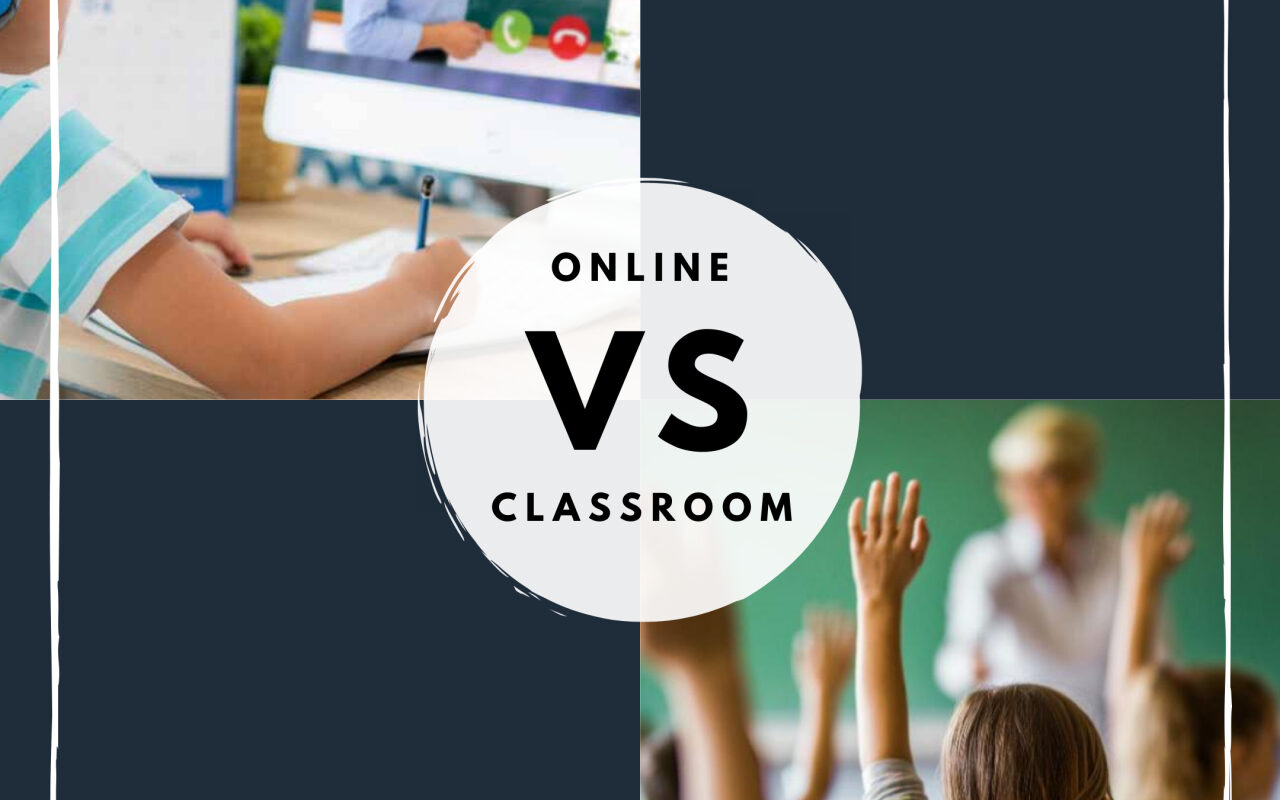The debate over whether online learning is superior to traditional classroom instruction has intensified in recent years. While both methods have benefits and drawbacks, the choice between online learning and classroom instruction ultimately depends on individual needs and preferences.
- Face To Face Interaction: – Conversely, classroom instruction provides face-to-face interaction with instructors and peers, which can be essential for some students. In-class discussions and group activities can foster a sense of community and collaboration that is difficult to replicate online. Classroom instruction can also provide immediate feedback and support from instructors, which can be crucial for students who are struggling with a particular subject.
- Structure and discipline: – Another advantage of classroom instruction is that it can offer a structured and disciplined learning environment. Students must attend classes regularly and adhere to a schedule. Classroom instruction can also provide hands-on learning opportunities that may not be possible online. For example, science experiments or art projects may require physical materials or equipment that cannot be replicated online.
- Flexibility: – The flexibility of online instruction is one of its most significant benefits. Online classes enable the cubs to study at their leisure, especially suitable for students who work, family obligations & live in remote areas. Online courses also eliminate the need for a daily commute, saving students time and money. Additionally, online learning can provide access to a wider range of courses and educational opportunities that might not be available in a traditional classroom setting. Online learning systems also offer online exams. Students have no more need to appear physically for their classes. Additionally, working students can pay someone to take my online class and save time, energy and money.
- The Medium of Instruction: Another difference between a classroom and virtual learning is the tool with which the teacher engages. When it comes to physical interaction, having the support of a teacher, in addition to verbal face-to-face interaction, is required to form the strongest connection. However, virtual learning necessitates technological proficiency. This becomes mandatory for teachers, who must know the instruments they use.
- The Price of Classroom Learning Vs. Online Classes: Online learning is much cheaper than physical learning, as travel and logistical requirements are eliminated, saving the student significant money. Furthermore, in traditional education, other expenses such as library fees, lab fees, and so on are added to your tuition fee, which is not the case in online classrooms. This increases the flexibility and efficiency of online learning for pupils. This also allows students to comprehend the benefits of work-study and allocate their time to worthwhile activities.
- Access to A Variety of Educational Resources and Notes: You must strictly attend if you intend to take notes in a traditional learning setting. Students need easy access to learning materials whenever they want. To stay ahead in the course, you must physically attend the lectures. On the contrary, a virtual classroom’s primary characteristic and benefit are how easily educational content can be viewed and used whenever the student desires. The material in virtual lectures is typically given in written or audio transcripts, which aid in the problem-solving process.
When students begin studying at leisure, they have more free hours to do useful and enjoyable things that add to their extra-curricular pursuits and skill set.
- Classroom Learning Vs. Virtual Classes: Discipline And Deadlines: Freedom comes with virtual learning. It allows you to learn at your speed and your own pace. A comfortable study space with music that puts you in a relaxed state to study. You can view your lectures whenever you want and take the test when ready. The rules and schedule are under the student’s control, which implies that the course’s success is also in your hands. The lack of a strict timetable can sometimes harm learning. This type of learning is generally not recommended for young students. Regarding devices, young children need more reasoning skills to comprehend and complete the training. A traditional learning method with set timings, school routines, and homework deadlines can help young children develop.
However, There Are Some Drawbacks To Virtual Learning.
A frequent issue teachers encounter when teaching online is a need for student feedback. This is a significant challenge because teachers frequently alter and improve their teaching methods in response to student feedback. As a result, the teacher is responsible for instilling tasks and learning habits that attract the audience.
Aside from that, when comparing online education with classroom learning, the content of the designated course must be tailored in a highly impactful way to maintain high standards in a remote learning environment. Teachers prepare and comprehend in-person teaching techniques in a successful standard classroom that enhances interactions and connection.
With an evolving educational setting, one may feel a little overwhelmed when reaching high university standards; however, you can use plenty of strategies to combat this issue.
Short Comings of Classroom Learning
However, classroom instruction also has some drawbacks. It can be expensive, requiring students to pay for tuition, textbooks, and transportation. Additionally, classroom instruction can be limited by geographic location, as not all schools or universities are accessible to everyone. Furthermore, classroom instruction can be disrupted by unexpected events such as inclement weather or illness.
The Verdict:
Ultimately, the choice between online learning and classroom instruction depends on various factors, including individual needs and preferences, financial resources, and access to technology. After learning about the differences between classroom learning and virtual courses, I know Both have advantages. However, in some areas, online learning will never be able to compete with conventional classrooms. Online learning could be appropriate for graduates who must work-study and cover their expenses. On the other hand, physical education cannot be avoided by young pupils.
Young minds gain more from daily life than from academics, and this information is critical for their future success. The right answer may combine the ideal combination of both worlds, extracting the positive aspects of both types of learning and putting them to use. Almost universally, modern training professionals recognise the value of combining online and classroom learning to offer the best outcomes for learners. Blended learning is the next phase of the learning industry, except for more practical (hands-on) training.




